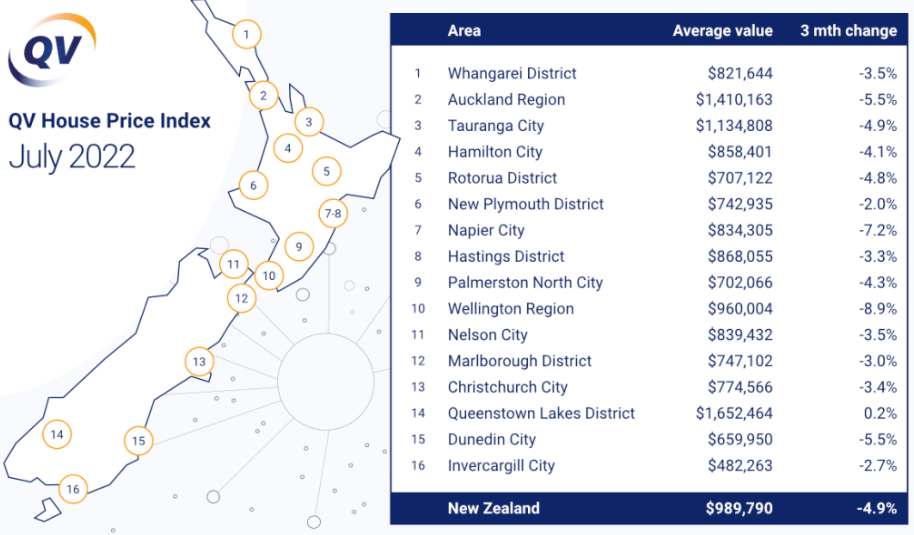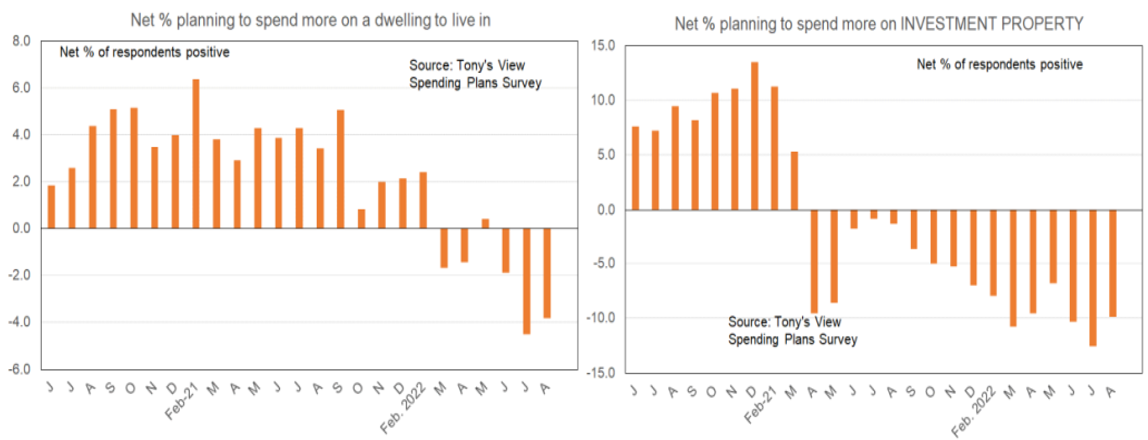Quotable Value (QV) is the latest data provider to report that New Zealand dwelling values are plummeting.
QV’s House Price Index (HPI) reported that average dwelling values plunged 4.9% over the three months to July, with all but one major districts recording price falls:

Heavy house price falls across New Zealand.
The average value of homes nationally peaked at $1,063,765 in January, and has since fallen every month to be $989,790 in July – a decline of $73,975, or 7%.
The fall in values has been especially severe in Auckland where dwelling values peaked at $1,541,168 in January and declined to $1,410,163 in July. That’s a fall of $131,005, or 8.5%.
QV’s results come hot on the heels of CoreLogic’s, which reported the sharpest fall in house prices since the Global Financial Crisis. with dwelling values down 2.5% over the three months to July and values falling across all six major regions over the month.
Heavy price falls have also been reported by realestate.co.nz, by the nation’s largest real estate agency, by the REINZ, and by TradeMe.
Meanwhile, economists at New Zealand’s largest bank – ANZ – have upgraded their forecasts for the official cash rate (OCR). They now tip the Reserve Bank of New Zealand (RBNZ) to deliver a further three 0.5% rate hikes, which will take the OCR to 4% by the end of this year.
We know from Tony Alexanders latest survey data that Kiwis are planning to spend less on both owner-occupier and investor mortgages:

Kiwis negative towards housing.
Therefore, if the RBNZ follows ANZ’s OCR forecast and continues to hike rates aggressively, it will all but guarantee a severe house price correction or crash.
The RBNZ would be signing the housing market’s death warrant.

